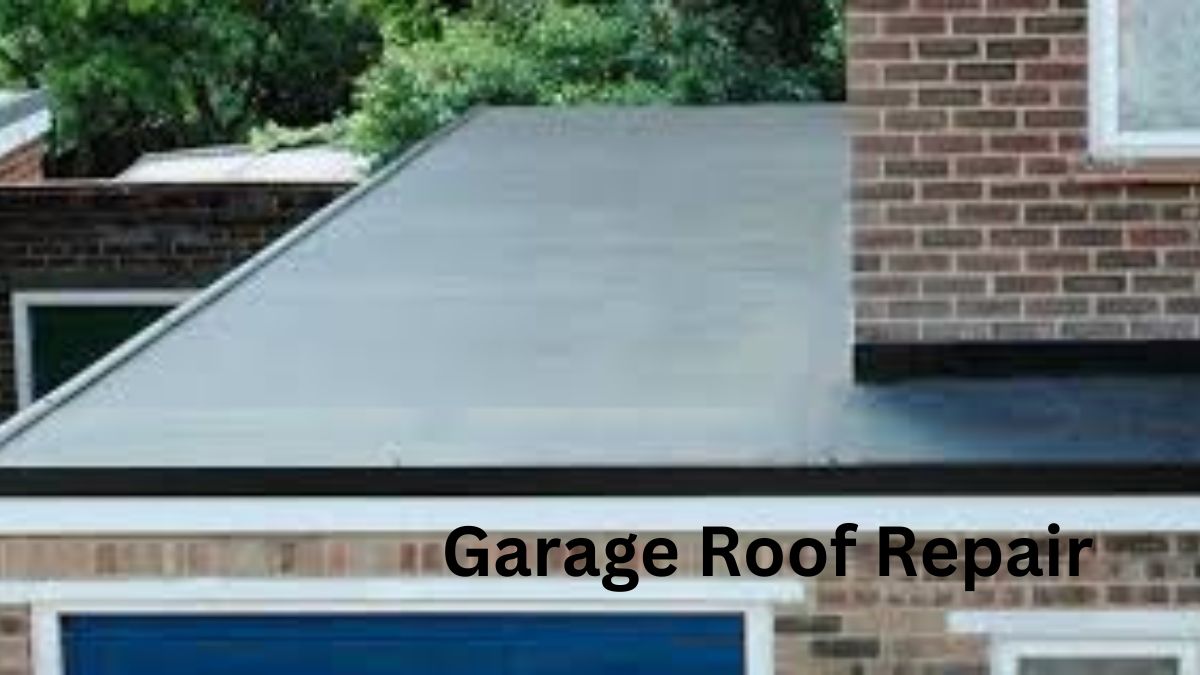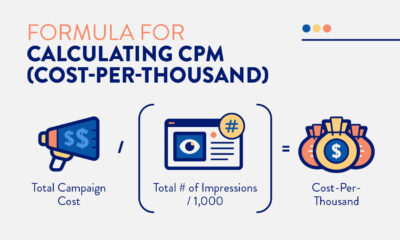HOME IMPROVEMENT
Garage Roof Repair: A Comprehensive Guide to Ensuring Structural Integrity

For the sake of your goods and the security of your vehicles, a well-kept garage is crucial. The roof is by far the most crucial part of a garage’s many components. Due to age, weather, and other causes, garage roofs may eventually get damaged. In order to guarantee the structural integrity of your garage, this article serves as a thorough guide to garage roof repair, including the prevalent problems, imperative tasks, and preventative measures.
Common Issues with Garage Roofs:
Leaks and Water Damage:
Leaks are among the most prevalent issues with garage roofs. Your garage’s contents, including your goods and the building itself, might sustain serious damage as a result of water intrusion. Roofing materials that are cracked or broken, improper flashing installation, or blocked gutters that cause water to collect are common causes of leaks.
Roofing Material Deterioration:
Your garage roof may deteriorate with time depending on the material that was used to construct it. While metal roofs may experience rust or corrosion, shingles may become brittle, split, or curl. The roof’s resistance to weather damage is compromised by this degeneration.
Mold and Mildew Growth:
Mold and mildew can thrive in conditions where there is inadequate ventilation and too much moisture on the surface of the roof. This not only detracts from the roof’s aesthetics but also puts residents’ health in danger.
Structural Weakness:
Long-term exposure to severe weather, such as persistently heavy snowfall or powerful winds, can erode the garage roof’s structural stability. In severe circumstances, this may result in drooping or even collapse.
Steps for Garage Roof Repair:
Assessment and Inspection:
Examine the garage roof carefully before starting the repair process. Locate any damage, leaks, or degradation indicators. Pay particular attention to the quality of the roofing materials as well as the flashing, vents, and skylights.
Addressing Leaks:
If leaks are found, make quick repairs your first priority. Flashing has to be fixed, broken shingles need to be replaced, and chimneys and vents need to be properly sealed. Clear blocked gutters and downspouts as well to avoid water buildup.
Replacing Damaged Materials:
Replace any broken parts, depending on the kind of roofing. Replace damaged or curled shingles on shingle roofs. Rusted areas on metal roofs may need to be patched or replaced.
Mold and Mildew Removal:
Clean the afflicted areas with a mild detergent solution and a gentle brush if mold or mildew is present. Make sure there is adequate airflow to stop further development.
Reinforcing Structural Integrity:
If a structural vulnerability is found, get professional advice to determine the degree of the damage. Replace damaged portions as necessary, or add more support to regions that require it.
Roof Coating and Sealing:
By adding an additional layer of defense against UV rays and the environment, the application of a roof coating may increase the longevity of your garage roof. Make sure the coating you choose is suitable for the type of roofing you have.
Preventive Measures for Longevity:
Regular Inspections:
To spot small faults and take care of them before they become more serious, perform periodic inspections of your garage roof, ideally twice a year.
Trim Overhanging Branches:
Trees close to your garage may drop debris during storms and result in damage. Cut back any branches that might touch the ceiling.
Maintain Ventilation:
Ample ventilation lowers the possibility of mold formation by preventing moisture accumulation. Make sure the vents are clear and working properly.
Clean Gutters and Downspouts:
Maintain gutters and downspouts routinely to avoid water buildup, which can result in leaks and water damage.
Professional Inspections:
To ensure complete inspections and upkeep, think about hiring a reputable roofing contractor. They are able to spot problems that an inexperienced eye could miss.
Conclusion:
In order for your important possessions to be protected, your garage roof must be properly maintained and repaired on a regular basis. You can make sure the structural integrity of your garage roof for many years to come by taking care of frequent problems, adhering to the right repair procedures, and putting preventative measures in place. Regular maintenance of your garage roof can not only prevent expensive damages but will also give you peace of mind knowing that your belongings and cars are well-guarded.
FAQ’s
Q1: How often should I inspect my garage roof for potential issues?
A1: Ideally, you should examine your garage roof in the spring and autumn. This is advised at least twice a year. These checks will assist you in identifying any minor concerns before they become more serious ones.
Q2: Can I repair my garage roof myself, or should I hire a professional?
A2: Although homeowners with basic DIY abilities may complete some small repairs, it’s best to hire a professional roofing contractor for more difficult repairs. They are equipped with the knowledge and know-how to guarantee a secure and reliable repair.
Q3: How do I identify a roof leak in my garage?
A3: Water stains on the ceiling, wet spots on the walls, peeling paint, and a musty odor are all indicators of a roof leak. Look for any obvious water damage or moisture buildup throughout your check.
Q4: What should I do if I find mold on my garage roof?
A4: It’s critical to eliminate any mold as soon as possible if it is found on your garage roof. Using a soft brush and a light detergent solution, clean the impacted areas. To stop further mold growth, take care of any underlying ventilation problems as well.
Q5: What preventive measures can I take to extend the life of my garage roof?
A5: Preventive practices that can help extend the life of your garage roof include routine inspections, removing overhanging branches, ensuring enough ventilation, cleaning gutters and downspouts, and thinking about expert inspections.
Q6: How do I choose the right roof coating for my garage roof?
A6: The roofing material on your garage determines which roof finish to choose. To choose the best coating for your particular roof type, speak to a roofing expert.

HOME IMPROVEMENT
Soul Land VI: Unveiling the Enigmatic World of Spirit Masters

Introduction to Soul Land VI
The most recent entry in the well-liked Soul Land series, Soul Land VI, has swept the anime community. It has succeeded in carving out a place in the hearts of anime fans all across the world with its engrossing plot, compelling cast of characters, and breathtaking graphics.
Background and Origin of Soul Land Series
Understanding the history of the Soul Land series is essential to fully appreciating Soul Land VI. This series, which was written by the gifted author Tang Jia San Shao, is well known for its outstanding storytelling that skillfully combine fantasy, adventure, and martial arts themes.
Plot Overview of Soul Land VI
The Protagonist and Setting
A new protagonist who must navigate a realm full with Spirit Masters, ethereal creatures, and long-forgotten truths is revealed in Soul Land VI. The carefully designed scene serves as a backdrop that amplifies the immersive experience as a whole.
Unique Features and Powers
Soul Land VI’s distinct power system is one of its distinguishing features. Discover the unique skills of Spirit Masters and the magnificent animals under their control. The story progresses as the protagonist uses these abilities to conquer difficult obstacles.
Fanbase and Popularity
Soul Land VI has amassed a large worldwide following. Its success can be ascribed to its gripping narrative, well-rounded characters, and the pure thrill of each new episode. This newest addition to the Soul Land realm has been warmly welcomed by the anime community.
Comparison with Previous Soul Land Installments
Soul Land VI may find itself compared to its predecessors by ardent series fans. This installment strikes a mix between nostalgia and creativity by introducing new aspects that distinguish it from the previous series while preserving its core.
Critical Acclaim and Reviews
Soul Land VI has received high marks from both reviewers and audiences for its superb animation, suspenseful storyline turns, and nuanced character development. Its standing as a unique anime has been cemented by the favourable response.
Exploring Character Development
Main Characters
Character development in Soul Land VI adds depth to the game’s adventure. The series creates an intricate web of emotions and character development, from the protagonist’s development to the nuanced interactions of supporting characters.
Character Relationships
Examine the complex interpersonal ties amongst the characters as you delve into issues of love, competition, and friendship. Soul Land VI skillfully combines these components, giving the story more levels of complexity.
Artwork and Animation Quality
Soul Land VI’s eye-catching aesthetic is evidence of the animation team’s commitment. Take in the striking vistas, exciting battle scenes, and overall splendour of the Soul Land universe as it is brought to life on screen.
Soul Land VI Merchandise
The selection of items is enormous for die-hard fans who want to add a little piece of Soul Land VI to their collection. The series has spawned a variety of memorabilia, including action figures and apparel, enabling fans to show off their passion for the anime.
Impact on the Anime Community
Beyond just providing entertainment, Soul Land VI has had a lasting impression on the anime community. Its impact goes beyond the screen, igniting debates, generating fan theories, and serving as inspiration for fan art.
Fan Theories and Speculations
Join in on the excitement of fan theories and conjecture as a group. Enter the internet forums where fans discuss and share their theories about what will happen in Soul Land VI.
Addressing Controversies
Soul Land VI is not an exempt work of art from controversy. By addressing issues and problems head-on, the story becomes more transparent and cultivates a community that recognises the show’s merits and faults.
Future Prospects and Expectations
Fans are excited about what’s to come as Soul Land VI develops. Maintain the community’s enthusiasm by exploring the possibilities and expectations for next episodes.
The Legacy of Soul Land VI
Consider the long-term effects Soul Land VI will likely have on the anime industry. The legacy of this episode will surely add to the Soul Land series’ enduring appeal as it carves out a place in fans’ hearts.
Conclusion
To sum up, Soul Land VI is proof of the potency of narrative and animation. Its creators’ skill is demonstrated by its capacity to enthral audiences, arouse strong feelings, and leave a lasting impact. The universe of Soul Land VI never ceases to amaze and inspire us as we eagerly anticipate the upcoming episodes.
HOME IMPROVEMENT
Auractive: Transforming Digital Engagement

The term “auractive” has become a game-changer in the constantly changing field of digital marketing. This article explores the definition, effects on search engine optimisation, and techniques for creating engaging content, delving further into the realm of interactive content.
1. Introduction
It’s critical to stand out in the ever evolving world of internet content. Content that engages consumers as well as draws them in has been dubbed “auractive,” and it’s become essential to the success of digital marketing initiatives. It is now critical for firms to comprehend and use interactive techniques in order to draw in their target audience.
2. What is Auractive?
Combining the words “aurora” and “attractive,” auractive refers to more than just aesthetic appeal. It creates material that not only looks attractive but also connects with the audience on a deeper level by encompassing the full user experience. With its roots in the concept of the aurora borealis, auractive content aims to dazzle and captivate.
3. The Impact of Auractive on SEO
User experience is becoming a higher priority in search engine algorithms. Because it emphasises engagement, interactive material has a direct impact on search engine rankings. Interactive content tells search engines that a website is important and relevant by enticing users to stay on it longer and engage with it.
4. Key Components of Auractive Content
A thoughtful combination of eye-catching graphics, captivating multimedia, and information that is both pertinent and helpful to the audience are all necessary to create compelling content. Creating a comprehensive experience that draws in and holds the user’s attention is more important than merely focusing on looks.
5. Crafting Auractive Headlines
Conclusion
In summary, the era of interactive content is here, and companies need to change to survive in the digital world. It is now imperative for success to prioritise user interaction with visually striking and emotionally impactful content—it is no longer optional. The future of digital marketing will continue to be shaped by the proactive strategy as algorithms change and consumer expectations rise.
FAQ’s
What makes content auractive?
Auractive content creates a compelling user experience by fusing eye-catching graphics, interesting elements, and insightful information.
How can businesses measure the success of auractive strategies?
To determine the efficacy of interactive content, employ analytics tools to monitor user engagement, time spent on sites, and interaction data.
Is auractive content only for large businesses?
No, interactive content is beneficial for companies of all kinds. No matter the size, it all comes down to building a relationship with the audience.
Are there risks in focusing too much on creativity in content creation?
It’s crucial to strike a balance between creativity and SEO needs. Search engine visibility may be impacted by overly creative content without intentional optimisation.
How can I get started with implementing auractive strategies?
Start with knowing who your target audience is, add visually appealing aspects, and keep evaluating and modifying your content in response to user input.
HOME IMPROVEMENT
Baldezinho: Unveiling the Viral Sensation

We will delve into the nuances of Baldezinho, exploring its origins, the surge in popularity, and its profound impact on social media and beyond. Baldezinho is a term that may sound unfamiliar to some, but it has taken the digital world by storm, captivating audiences globally with its unique charm and engaging challenges.
Introduction to Baldezinho
Brief definition
Fundamentally, baldezinho is an alluring movement that blends aspects of physical exercise, community involvement, and creativity. This phenomenon, which began in [provide specifics of the origin], has quickly spread over the world.
Origins and history
Understanding Baldezinho’s origins is crucial to appreciating it to the fullest. We can understand the cultural importance that has brought it into the spotlight by tracing its beginnings back to [historical context].
The Popularity Surge
Social media impact
Analysis of Baldezinho’s rise must take into account the influence of social media. Fans of Baldezinho have found a home on sites like [mention platforms], where they can display their talents and engage with a wide range of people.
Viral trends
Baldezinho stands out due to its propensity for becoming viral frequently. We’ll look at the main causes of the Baldezinho difficulties’ quick propagation as well as how these developments affect internet discourse.
Unraveling the Baldezinho Phenomenon
Key features and characteristics
Baldezinho has unique characteristics that draw in both participants and onlookers, making it more than merely a fad. We’ll break down what makes Baldezinho so fascinating from [mention features].
Why it stands out
Baldezinho remains distinctive amidst the deluge of digital stuff. We’ll discover the reasons behind Baldezinho’s rise to prominence in internet culture, whether it’s because of [specify certain features].
How to Join the Baldezinho Craze
Participation tips
There are some tried-and-true advice for those who are eager to dive into the realm of Baldezinho in order to guarantee a smooth experience. We’ll give you a detailed how-to manual to get you going.
Common misconceptions
However, false beliefs accompany widespread popularity. We will dispel prevalent misconceptions about Baldezinho and provide prospective participants with accurate information.
Baldezinho Challenges and Contests
Notable events
We’ll showcase a few of the most noteworthy Baldezinho competitions and challenges from [name events] that have had a long-lasting effect on the neighbourhood.
Community engagement
Baldezinho is a culture that thrives on community involvement rather than just individual performances. We’ll look at how people connect, exchange stories, and lend support to one another.
Health and Safety Considerations
Guidelines for safe participation
Baldezinho promotes physical exercise, but safety always comes first. We’ll go over important rules that players must follow to guarantee a safe and pleasurable event.
Avoiding potential risks
It’s crucial to acknowledge potential risks associated with Baldezinho. We’ll discuss preventive measures and how the community addresses safety concerns.
Baldezinho Across Cultures
Global adoption
Baldezinho’s appeal is universal; it is not limited to any one area. We’ll look at how many civilizations have assimilated Baldezinho and added their own touches.
Cultural variations
Baldezinho is popular all across the world, yet it is not the same in every culture. We’ll delve into these subtleties and honour the variety that exists within the Baldezinho neighbourhood.
Influence on Fitness and Wellness
Physical benefits
Baldezinho is not just entertaining; it has real health advantages. We’ll talk about how taking part in Baldezinho challenges helps individuals become more physically fit.
Mental health impact
Baldezinho’s mental health component is also important. We’ll look at how the community creates a supportive environment and the positive effects on individuals’ well-being.
Interviews with Baldezinho Enthusiasts
Personal experiences
We will publish interviews with ardent Baldezinho lovers to offer a firsthand account. Readers will gain a better grasp of the phenomenon from their unique perspectives and personal experiences.
Testimonials
What aspects of Baldezinho appeal to participants? We’ll compile testimonies that demonstrate how Baldezinho has changed people’s lives for the better.
The Future of Baldezinho
Anticipated trends
Like any trend, Baldezinho keeps changing. We’ll look at projected patterns and innovations that could influence this online phenomenon in the future.
Continuous evolution
Baldezinho’s versatility is what gives it its beauty. We’ll talk about how the ingenuity of the community makes sure that Baldezinho challenges and material are always evolving.
Baldezinho Merchandise
Popular products
Baldezinho has created its own market for products and branded clothing. We’ll highlight well-liked goods that enthusiasts can investigate to help the neighbourhood
Supporting the community
Buying Baldezinho products is a way to give back to the community in addition to being a stylish way to own things. We will emphasise how these purchases directly contribute to Baldezinho projects.
Impact on Social Media Platforms
Algorithmic considerations
Social media networks’ algorithms are a major factor in Baldezinho’s visibility. We’ll examine how these algorithms impact Baldezinho content’s engagement and reach.
Baldezinho’s algorithm
Baldezinho has its own algorithmic patterns, which is interesting. We’ll look at what the Baldezinho community finds viral in material and how members might use these findings.
Baldezinho and Influencer Culture
Influencers embracing the trend
Trends are greatly influenced by influencers, and Baldezinho is no exception. We will highlight the influence of influencers who have joined the Baldezinho frenzy.
Collaborations and partnerships
The nexus between influencer culture and Baldezinho has produced fascinating partnerships. We’ll look at collaborations that have helped Baldezinho achieve unprecedented success.
Baldezinho in the News
Media coverage
The media has taken notice of Baldezinho. We’ll look at how Baldezinho is portrayed in the news and how traditional media outlets cover it.
Public perception
The direction of every trend can be influenced by public opinion. We’ll examine public perceptions of Baldezinho and how they affect society perspectives.
Conclusion
In summary, Baldezinho is a cultural phenomena that has permeated internet groups all over the world and is more than just a passing fad. Baldezinho welcomes everyone to explore their creativity, interact with a welcoming community, and experience the delight of the unexpected—regardless of experience level or interest level.
FAQ’s
What is the origin of the term “Baldezinho”?
Baldezinho’s cultural origins and historical significance may be traced back to [give origin details].
Is Baldezinho only popular on specific social media platforms?
Although Baldezinho first became popular on [name platforms], its reach has spread to a number of social media platforms.
Are there age restrictions for participating in Baldezinho challenges?
Baldezinho is a welcoming community where people of all ages participate. But it’s important to take into account each person’s safety and talents.
-

 Fashion6 months ago
Fashion6 months agoHow To Style Earrings for a Night Out
-

 Real Estate1 year ago
Real Estate1 year agoHow to Unlock the Benefits of Real Estate Investment in Pakistan
-

 Business2 months ago
Business2 months agoWhat Can You Expect from a High-End London Office Space?
-

 Tech11 months ago
Tech11 months agoTMIIS Virtual Gateway: Opening New Horizons in Global Connectivity
-

 Digital Marketing2 months ago
Digital Marketing2 months agoHow to calculate CPM in digital marketing?
-

 Lifestyle1 year ago
Lifestyle1 year agoThe New Trend in Home Furnishings Teapoy and Wooden Sitting Stool
-

 General2 months ago
General2 months agoUnraveling the Mysteries of “λιβαισ”: A Comprehensive Guide
-

 Real Estate1 year ago
Real Estate1 year ago5 Common Mistakes to Avoid When Buying Property in Pawleys Island, SC